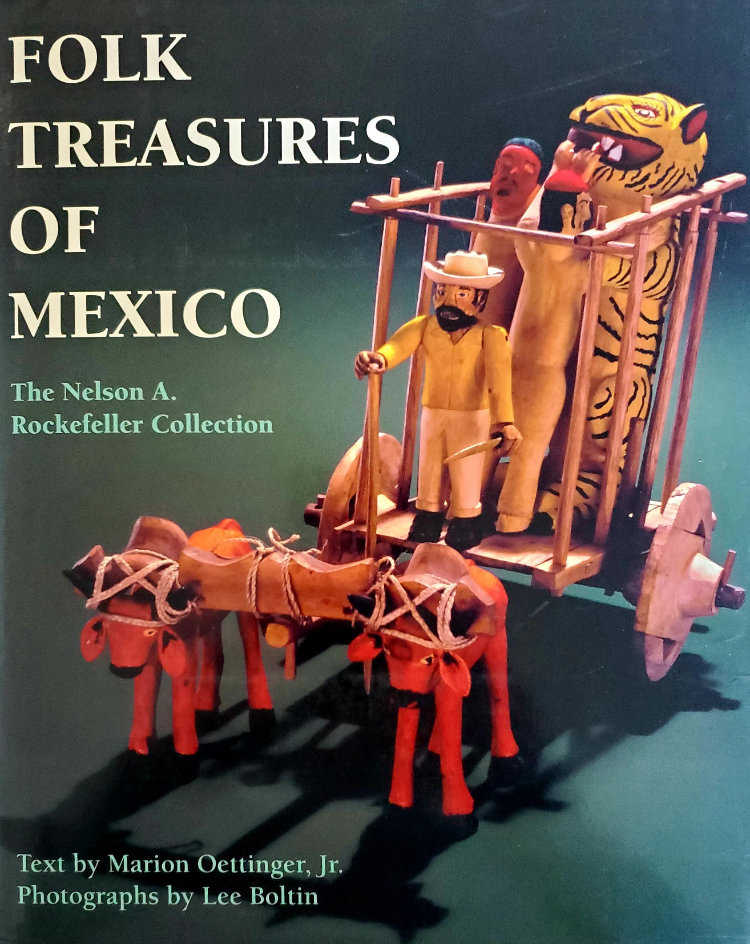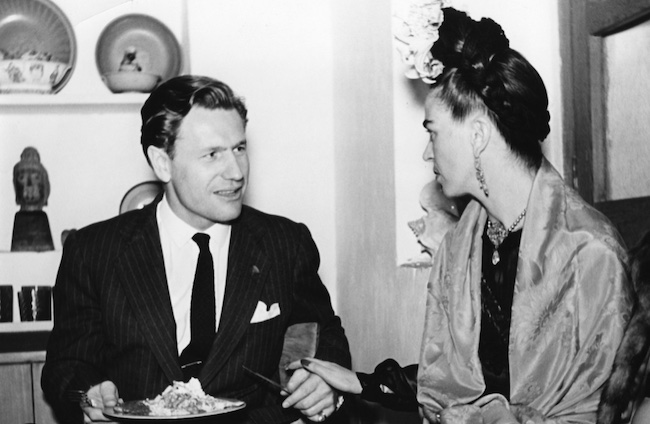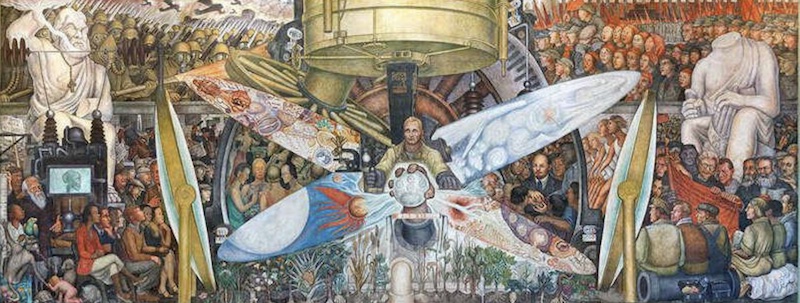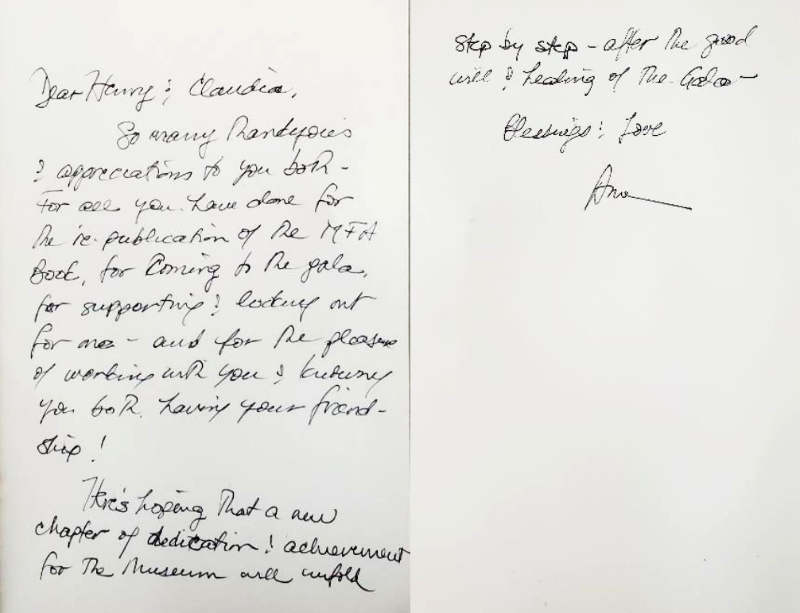With the sad recent passing of my friend Lupe Rivera Marín (see my January 16 blog post), I’ve been thinking a lot about the many people and projects that we were able to join over the decade-and-a-half (1999-2014) during which we combined forces in the arts and civic culture space.
Lupe’s passing has me especially thinking a lot about Mexico; and my formerly ambivalent relationship with the land of my ancestors…an ambivalence that she ultimately had a huge hand in reshaping into a definite affinity and sense of pride.
One of the most memorable connections that Lupe and I shared was Ann R. Roberts, daughter of Nelson A. Rockefeller (1908-1979), the late former New York governor and, then, vice president of the United States.
I met Ann at a San Francisco Mexican Museum-hosted cocktail mixer at Christie’s in New York City during early 2003. She tracked me down in the crowd to introduce herself and to tell me about an interesting project she was undertaking.
Namely, she told me, she intended to finance a Spanish translation and updated edition of a book called Folk Treasures of Mexico, published originally a decade prior by the prestigious Harry N. Abrams book press.

The book featured the large and impressive collection of Mexican folk art assembled by the late Nelson Rockefeller during his decades-long love affair with Mexico and Latin America.
Indeed, Ann had accompanied her father to Mexico for what would be his final extensive tour of rural folk art only shortly prior to his passing in early 1979. She felt that publishing a beautiful book featuring the entirety of his collection was the best way to honor his legacy, and his love of Mexican people and culture.
Ann had learned from multiple sources that I was closely associated with Dr. Nicolás Kanellos, founder and director at University of Houston-based Arte Público Press, where I had published and edited numerous books. She wondered if Nicolás and the press might be available to consider a collaboration.
It was a no brainer to express great interest in reply to Ann’s query. And, indeed, I did help to bring her and Dr. Kanellos together to produce an updated copy – and a Spanish translation – of Folk Treasures of Mexico (Arte Público Press, 2010).
In subsequent years, inspired by the Rockefeller collection, I even painted a trilogy of original works featuring images and elements from portions of it. Here is how they turned out:

All of that alone would have made my conversation with Ann at Christie’s worthy of lifetime recognition. But it turned out there was so much more to come from it than I could even know….
Ann told me she understood that Lupe Rivera Marín, daughter of the legendarily-fiery artist-activist Diego Rivera was a board member of the Mexican Museum. She wondered if she was in the crowd. Somehow, Ann seemed to have been briefed that Lupe and I—both fellow Museum board members—were pals.
I told Ann, yes, Lupe was in the room and that I would be honored to introduce her. I then gently took Ann by the arm and asked her to follow me. We graced our way across the room. It seemed like a long time to get to Lupe, though in reality it could not have been more than five seconds.
In that flashing passage, I suddenly realized that it had fallen to me of all people to bring these two daughters of history, these two special women together after lifetimes of ‘knowing’ one another, without ever having actually met.
The explanation for this was rich…
In the early 1930s, during the raging Depression, the Rockefeller family had commissioned the radical muralist Diego Rivera to paint a signature mural in the lobby at 30 Rockefeller Plaza in the heart of New York City. Rivera and his wife Frida Kahlo had been friends of Nelson Rockefeller’s over some years. Despite their ideological differences, they genuinely liked each other.

As fate would have it, though, in one of the most celebrated instances of artistic controversy in U.S. history, Rivera’s mural ultimately inspired an irreconcilable fissure in the Rivera-Rockefeller relationship.
The issue was the communist Rivera’s surprise inclusion of the Russian revolutionary Vladimir Lenin as one of the mural’s final featured elements. The Rockefeller family patriarch John D. Rockefeller, the ultimate capitalist, could not abide Rivera’s cheeky jab. He gave it the thumbs down.
Here’s the Rockefeller Center mural that Rivera painted in its entirety.

Nelson Rockefeller, Ann’s father, was tasked to tell the prickly artist Rivera, Lupe’s father, that the Lenin element would have to go or the whole thing would have to go. Rivera refused to accommodate the requested change. The rest is history.

Eventually, the ill-fated mural was tragically destroyed, and the Rivera and Rockefeller families went forevermore in different directions. That is, until I finally reached Lupe across the room at the Christie’s gathering and connected the dots back through Ann.
When I introduced the two women, I could feel an immediate connection, genuine affinity, and a quietly-shared sensation of victimization from the lingering legacy of decades past.

In time, Ann became a fellow traveler with me and Lupe in order to advance our collective campaigns for the Common Good through arts and culture.
When we finally published the new Folk Treasures of Mexico volumes, I accompanied Ann on her related book talks in Mexico City, Houston, and San Antonio. In prior years, I had done similar tours with Lupe following the publication of Arte Público Press’s English translation version of her book Diego el Rojo (Diego the Red), a biographical sketch of her father’s political and creative formation.
Through these engagements, I came to know and appreciate Mexico in a whole different way. I came to understand for the first time how deep inside of me my ‘Mexicanismo’ ran. I came to feel a discernible pride, liberation, and connectivity in relation to my Mexican origins that Anglo-Saxon life in the U.S. had so often sought to deny or invalidate.

In Mexico City, Ann’s extremely well-attended talk coincided with her birthday. Our tour group included me, Arte Público Press publisher Nicolás Kanellos, San Antonio Museum of Art director Marion Oettinger, and Rockefeller Family Corporation staff members Edi Hansen and Tony Burti. Of course, we all decided to celebrate Ann over a beautiful lunch at La Hacienda de los Morales and we all gave her personal presents.
Nicolás Kanellos led us in a rousing rendition of las Mañanitas (the Mexican happy birthday song). We lifted our glasses and roared big Mexican gritos. There wasn’t a dry eye in the house. It was just an epic moment for all of us. It was the power of Mexican art, culture, and cuisine that made this all possible
A few days later, after a hugely-successful standing room only book release event and talk at the University of Houston, we faced serious storms all over South Texas that cancelled all air travel. So, our flight plans to get from Houston to San Antonio the following morning for our next event were suddenly dashed. That meant our gathering scheduled for the San Antonio Art Museum was hanging in the balance.
A lesser figure would have merely given over and given up. But not Ann Roberts. At her call to action, we mobilized and formed a rental car caravan in three vehicles to get our team to the San Antonio event. To get there, our little band travelled through massive winds and relentless hail storms all across the vast wastelands of the Lone Star State.
We made it to the San Antonio Art Museum only 30 minutes before show time, exhilarated and perhaps a little surprised that we actually pulled it off. After the fact, Ann circulated this thankful and precious email:

Then, after me and Claudia attended a Mexican Museum gala in Ann’s honor in San Francisco a few months later, she sent us a delightful note of gratitude to recognize our partnership and friendship. Her words, so heartfelt and sincere, really touched both of us…

In subsequent years, Ann came to various events that I hosted at my art studio on East 85th Street and at The Gallery of Graphic Arts (GoGA) on New York’s Upper East Side. She even bought one of my paintings for her private collection at my GoGA show in 2015. That really touched me.

Above all, Ann gave me great advice one time about how to manage life with so many demands coming at you from all directions. Her tip, sort of like Joni Mitchell’s poignant lyrics to her classic song Both Sides Now: “Don’t give yourself away.” Loosely translated, Ann’s point to me was: Do all the good you can in life; but don’t kill your own buzz by giving so much away that there’s no more joy left for you.
Coming from someone like her, I found the advice remarkably valuable and useful. In more recent years, I have tried especially hard—though not always with success—to heed Ann’s counsel. At this stage of my game, it is more important than ever to digest and appreciate life, rather than just to run through it, breathless and blind to the surrounding scenery.
By living life open to the signs we are gifted along the way, we expand our opportunities to learn, to grow, and to receive the benefits of all that others have to offer us.
Upon reflection, I have been gifted so many good things in my time on earth to date. I have been remarkably fortunate in both my life and in my creative journey, to collaborate with remarkable figures like Ann Rockefeller Roberts, Guadalupe Rivera Marín, and so many others of similar significance.

Even more important, I’ve been privileged in so many instances to come to know such special individuals as people; dare I even say as friends. And that has been such a marvelous and treasured aspect of the movie that has been my life so far.
It just goes to show: If we are open to it and listening, such are the rich lessons of Mexico’s countless and enduring folk treasures.


































